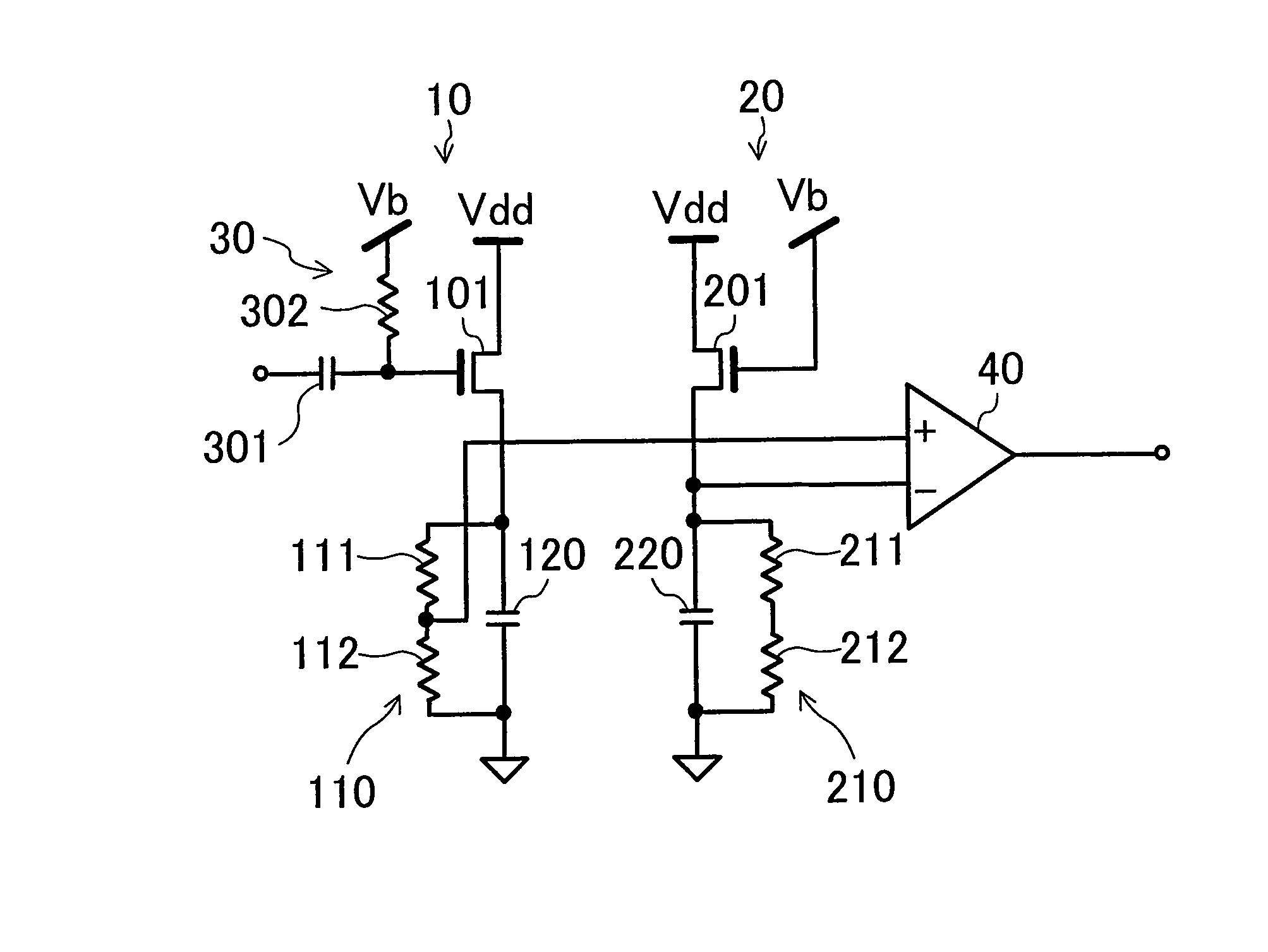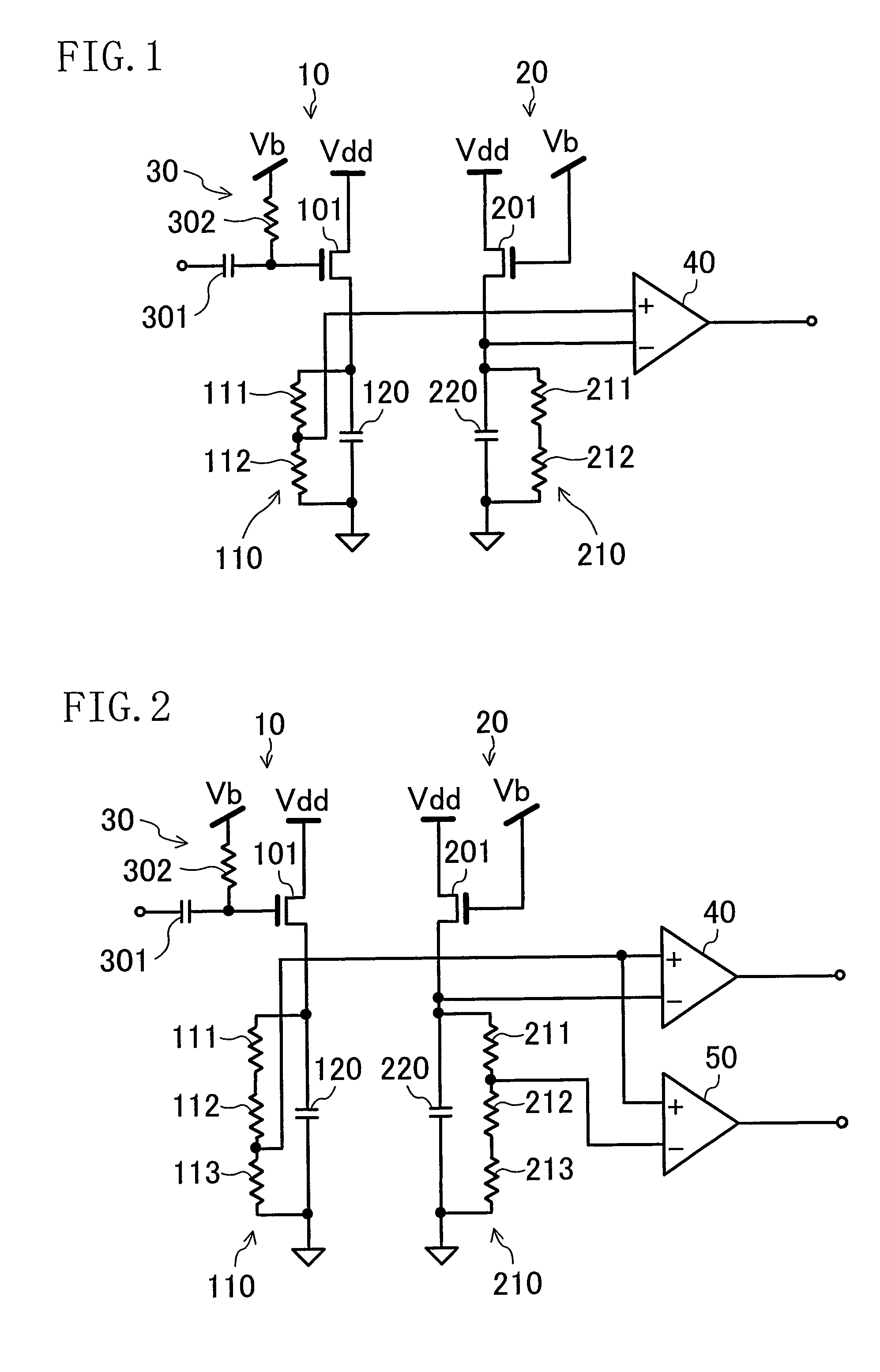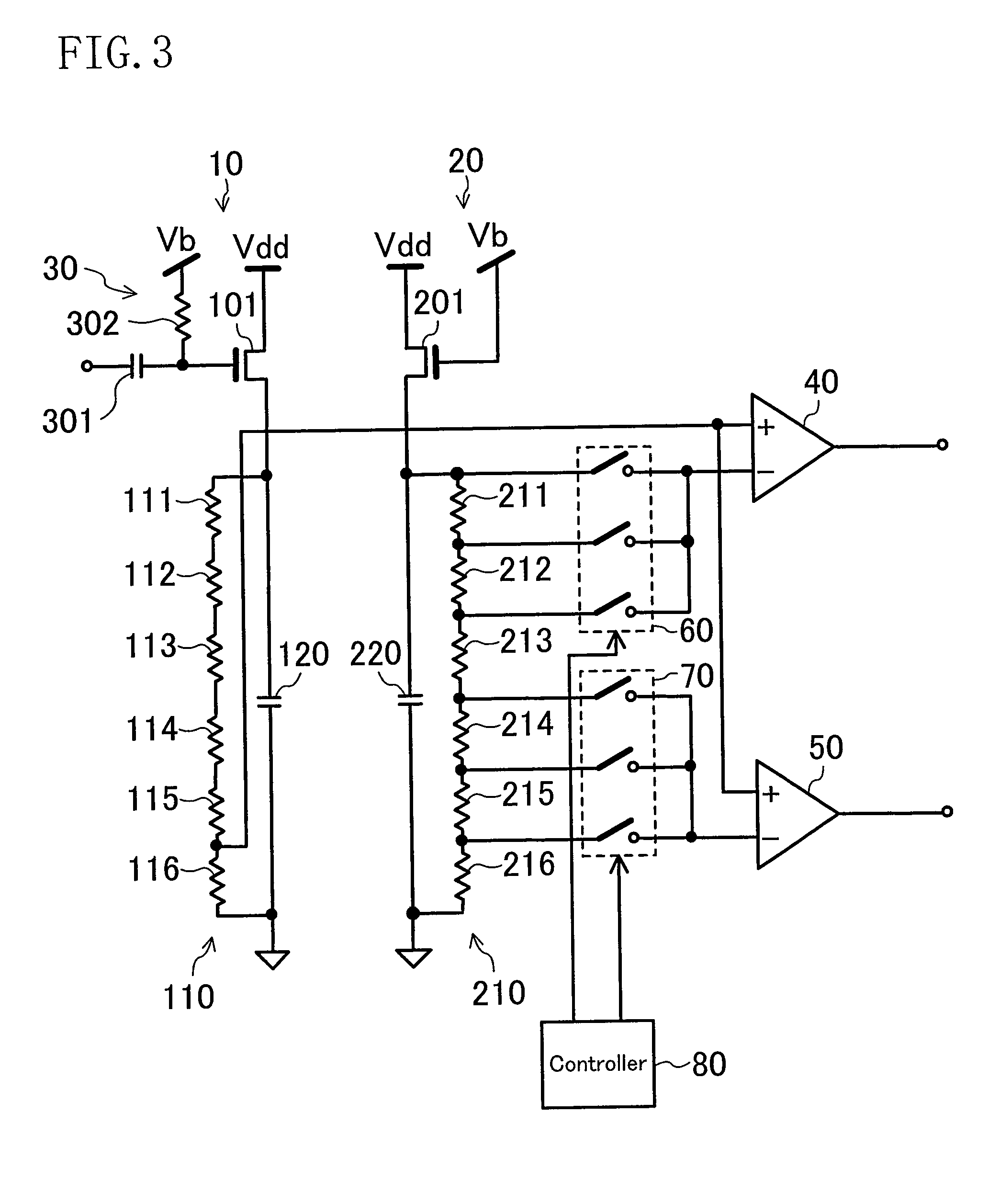High frequency power detector circuit and radio communication device
a detector circuit and high frequency technology, applied in the field of detector circuits, can solve problems such as detection error and detection power level error, and achieve the effect of increasing the circuit dimension
- Summary
- Abstract
- Description
- Claims
- Application Information
AI Technical Summary
Benefits of technology
Problems solved by technology
Method used
Image
Examples
embodiment 1
[0027]FIG. 1 shows the structure of a high frequency power detector circuit according to Embodiment 1. The high frequency power detector circuit of the present embodiment includes two envelope detector circuits 10 and 20, a level shifter 30 and a detector 40. In the envelope detector circuit 10, a drain of an N-channel field effect transistor 101 is connected to a supply voltage Vdd and a resistance row 110 including two serially-connected resistance elements 111 and 112 and a capacitative element 120 are connected to a source the transistor 101 in parallel. The structure of another envelope detector circuit 20 is the same as that of the envelope detector circuit 10. That is, in the envelope detector circuit 20, a drain of an N-channel field effect transistor 201 is connected to a supply voltage Vdd and a resistance row 210 including two serially-connected resistance elements 211 and 212 and a capacitative element 220 are connected to a source of the transistor 201 in parallel. In t...
embodiment 2
[0036]FIG. 2 shows the structure of a high frequency power detector circuit according to Embodiment 2. In an automatic gain control system of a common receiver, a feed back control system performs hysteresis control to ensure stability. For this reason, an upper limit and a lower limit of the power level of a high frequency signal have to be detected. According to the high frequency power detector circuit of the present embodiment, the power level of an input high frequency signal can be detected based on two reference voltages. More specifically, the high frequency power detector circuit of the present embodiment is the same as the high frequency power detector circuit of Embodiment 1 except that a detector 50 is additionally provided. The difference from the structure of Embodiment 1 is described below in detail.
[0037]In an envelope detector circuit 10, a resistance row 110 includes three resistance elements 111, 112 and 113 connected in series. Among intermediate terminal voltage...
embodiment 3
[0040]FIG. 3 shows the structure of a high frequency power detector circuit according to Embodiment 3. The high frequency power detector circuit of the present embodiment is the same as the high frequency power detector circuit of Embodiment 2 except that selectors 60 and 70 for switching between the first and second reference voltages output from the envelope detector circuit 20 and a controller 80 are additionally provided. The difference from Embodiment 2 is described below in detail.
[0041]In an envelope detector circuit 10, a resistance row 110 includes six resistance elements 111, 112, 113, 114, 115 and 116 connected in series. Among intermediate terminal voltages of the resistance row 110, the envelope detector circuit 10 outputs the one which is the nearest to a ground node, i.e., a voltage at a connection point between the resistance elements 115 and 116. In an envelope detector circuit 20, a resistance row 210 includes six resistance elements 211, 212, 213, 214, 215 and 216...
PUM
 Login to View More
Login to View More Abstract
Description
Claims
Application Information
 Login to View More
Login to View More - R&D
- Intellectual Property
- Life Sciences
- Materials
- Tech Scout
- Unparalleled Data Quality
- Higher Quality Content
- 60% Fewer Hallucinations
Browse by: Latest US Patents, China's latest patents, Technical Efficacy Thesaurus, Application Domain, Technology Topic, Popular Technical Reports.
© 2025 PatSnap. All rights reserved.Legal|Privacy policy|Modern Slavery Act Transparency Statement|Sitemap|About US| Contact US: help@patsnap.com



